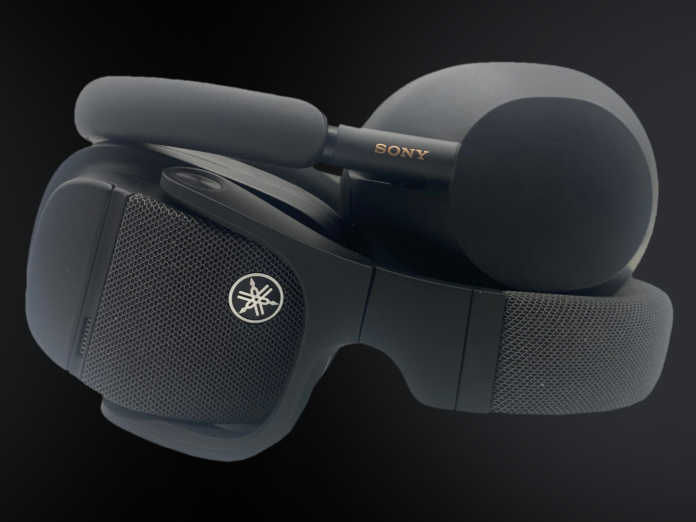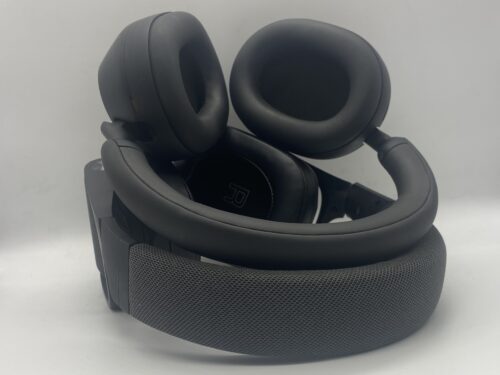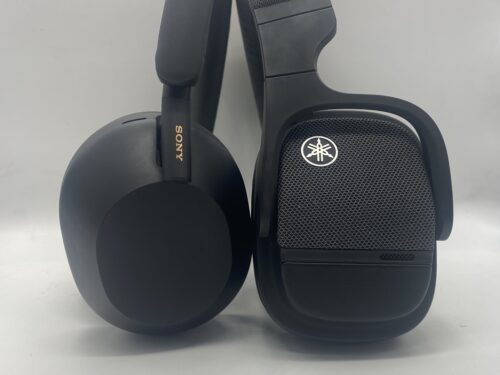There aren’t a lot of massively popular Bluetooth headphones quite like the Sony WH-1000XM5. For years, Sony has brought industry-leading noise-canceling and their 360 Reality Audio technology to their flagship headphone series. One recent release that has me thinking about the XM5 is the new Yamaha YH-L700A. At the time this article has been published, the L700A is the same price as the XM5, so you might be thinking about which one is more worth it.
What You Get
| Yamaha YH-L700A | Sony WH-1000XM5 |
|
|
Look & Feel
These headphones have wildly different designs. The XM5 is light and sleek but looks like a toy next to the L700A. Both headphones use plastic parts, but the L700A feels more durable. The mesh pattern on the L700A also gives off a more stylish and elegant look than the plain black or silver design for the XM5. They’ll both be comfortable headphones to wear though. However, the L700A does get a bit hot in my experience, leaving the XM5 to be the more breathable option.
Design & Functionality
If we’re comparing drivers and power, the L700A takes it in this comparison. You’ll get a lot more loudness from the L700A, as it gives you plenty of headroom for gain adjustment. The XM5 isn’t so lenient with its volume. However, the XM5 has the L700A easily beat when it comes to noise-canceling. ANC is still effective on the L700A, but the isolation is nowhere near as strong as the XM5. Sony’s “My Headphones” app also houses more features than the L700A, including adaptive noise cancelation, and DSEE activation. Yamaha’s app is still nice but lacks an EQ, and is mainly used to cycle through 3D features. Spatial audio is a big factor for both headphones, and the L700A actually does a better job of making this feature more accessible. With Sony 360 Reality Audio, you can only listen to tracks from specific services that offer it. The L700A will support 3D audio through any audio you use to listen to the headphones with.
Bluetooth
While the L700A is a bit behind in the Bluetooth department, only offering version 5.0, you should still have an easy time pairing the headphones. However, the XM5 is clearly the more advanced of the two, supporting Bluetooth version 5.2, with LDAC being offered over Qualcomm aptX adaptive.
Battery Life
With all of the features that both headphones tout, battery life will take a hit depending on how much you’re using them. Both the XM5 and L700A are pretty close in terms of playback time. The XM5 has an advertised battery life of 30 hours, while the L700A is 34 hours.
Soundstage
Your experience with the spaciousness of these headphones will ultimately come down to what you think about their 3D options. By themselves, it’s apparent that the L700A possesses more comprehensive imaging. The XM5 is a lot more concentrated, with layers overlapping in a more limited headspace. It’s in your head more so than the L700A, but still retains spatial positioning. In a surprising fashion, the L700A outdoes the XM5 in some aspects of its 3D modes. With the right setting, the L700A does a great job of expanding the spatial presentation of most tracks. Sony’s 360 Reality mode is great, but things felt more properly scaled on the L700A. You have to be on the right mode though because the L700A has a lot of them. The XM5 keeps it simple, and it works to great effect. Sometimes the L700A can appear too fake and airy if you happen to use concert hall mode while listening to a standard studio recording for example. It feels like 360 Reality Audio specialized more in any kind of recording and optimizes itself better. However, the L700A is a real killer with movies and online videos. It does a better job communicating space between sound elements and showing their proper distance.
Low End
Both headphones have an exciting bass response. You get a lot more room for adjustment with the XM5, but the L700A still offers more of a natural impact in its standard form. The XM5 feels more engulfing and wide, but without any EQ and Clean Bass, the timbre can be pretty boomy. The L700A balanced its thick tone with a more organized distribution of frequency content. The sub-bass and mid-bass ranges stack more articulately, and they don’t bleed into the mids as much as the XM5 does.
Mids
Neither headphone is particularly great in the midrange, but they both have their advantages. The L700A is definitely the cleanest of the two, but there is still some significant recession. I think the XM5 is too foggy without EQ, and adjusting it isn’t always effective. Vocals are more dominant on the XM5 though, and take more command over the sound signature.
Highs
The L700A has these great shimmery highs that provide some awesome texture to their profile. They exhibit some engaging height, and it really immerses you in their sound. Surprisingly, the XM5 also has some nice flavor in the highs, but their tone isn’t quite as substantial. Using EQ can really make things pop, but it can never be as crisp and pleasant as the L700A.
Summary
I don’t think there will be anything that stops the XM5 from being as popular as it is, but the L700A is definitely a solid alternative. Its 3D features are impressively vast, even if you have to find where it works best. Its sound is also more enjoyable, but it doesn’t have an EQ as the XM5 does. It will also be hard to find anything that matches the 1000x series ANC capabilities, but the L700A does a good job in its own right.
The Sony WH-1000XM5 and the Yamaha YH-L700A are available at Audio46.
Compare the ranking of various headphones, earbuds and in-ear monitors using our tools.
Discuss this, and much more, over on our forum.
---MAJORHIFI may receive commissions from retail offers.

















